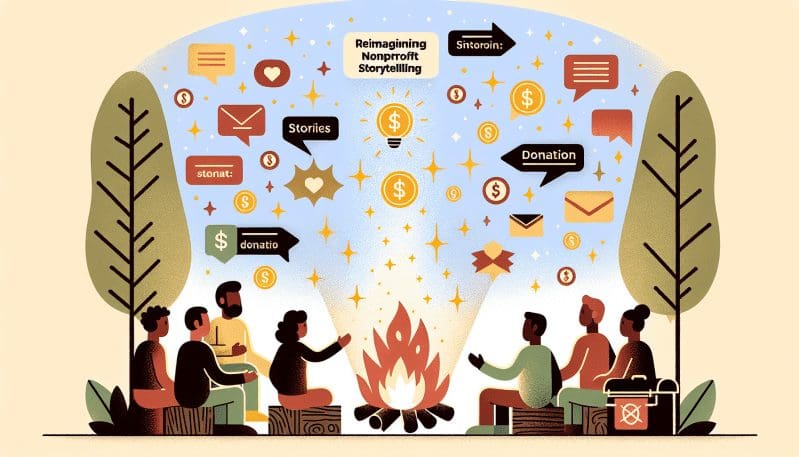In an age where content is as vital as currency, the art of storytelling for nonprofit organizations has become essential in breaking through the digital noise and connecting with hearts and minds. While traditional fundraising appeals have their place, it is the authentic and compelling narratives that weave the fabric of a loyal community of supporters, emotionally invested in the nonprofits’ causes.
Storytelling is not merely an act of sharing; it’s an invitation to embark on a journey, one that is unique to each nonprofit’s mission and values. It is personal, evocative, and most importantly, it is a tool for a transformation that enables organizations to humanize their impact and foster deep connections with their audience.
The Impact of Storytelling on Donor Retention and Engagement
————————————————————-
One cannot underestimate the power of a well-told story in the nonprofit sector. Donors are not just giving to an organization; they are investing in a narrative they believe in, one they want to see unfold. Studies have shown that when donors feel emotionally stirred, their likelihood of contributing increases significantly. However, the challenge doesn’t end at the first donation. The key to sustainable growth is donor retention, and storytelling plays a pivotal role in this.
Engaging, ongoing narratives help keep the audience connected and invested over time. By providing a window into the changes they’re enabling, donors become part of the narrative themselves. A study by the Fundraising Effectiveness Project reported that organizations that managed to retain donors for more than a year saw a 60% increase in the value those donors provided.
Case Studies: Storytelling Successes
————————————-
Several nonprofits have harnessed the power of storytelling to great effect. Take, for example, charity: water, which revolutionized nonprofit digital storytelling by sharing the powerful and personal stories of individuals affected by water crises. Their use of multimedia storytelling not only informed but also inspired action and solidarity among their donor community.
Another exemplary case is the St. Jude Children’s Research Hospital. Through sharing patient stories and the hospital’s revolutionary research and treatments, they have built a narrative of hope and resilience that resonates with donors and encourages sustained support.
The Balance Between Emotional Appeal and Transparency
—————————————————–
While emotional narratives can be powerful, nonprofit organizations must also commit to transparency. Today’s donors are more discerning; they want to know how their contributions are being used and the efficacy of nonprofit programs. Blending the emotional element of storytelling with clear, factual information about the organization’s work and its impact helps in maintaining the trust of supporters.
Maintaining Authenticity in a Digital World
——————————————–
Digital platforms have opened new avenues for storytelling, but they have also made audiences more vigilant about authenticity. An authentic story is consistent and true to the organization’s brand and mission. It allows audiences to engage on a deeper level because they believe in what they’re seeing and hearing. Nonprofits need to ensure that the stories they tell align with their actions and values.
Practical Tips for Nonprofit Storytellers
—————————————–
To excel in the art of storytelling, here are a few practical tips nonprofit marketers can employ:
1. Use various platforms to tell your stories, from social media, which allows for quick and emotional snapshots, to email campaigns that can delve deeper into a narrative.
2. Engage with live events, whether in-person or virtual, to create a shared experience that brings the story to life.
3. Incorporate multimedia elements like videos, photos, and infographics to enhance the storytelling experience.
4. Be inclusive and diverse in the stories you tell; represent the different voices and experiences within your community.
5. Encourage user-generated content – let your donors and beneficiaries share their own stories within the context of your nonprofit’s impact.
In conclusion, storytelling in the nonprofit sector is more than just a trend; it is the cornerstone of meaningful engagement in a digital era dominated by fleeting attention spans. By embracing authentic narratives, nonprofits can tap into the very essence of what it means to be human – our love for a good story – and in doing so, secure not just donations, but enduring partnerships and support.























